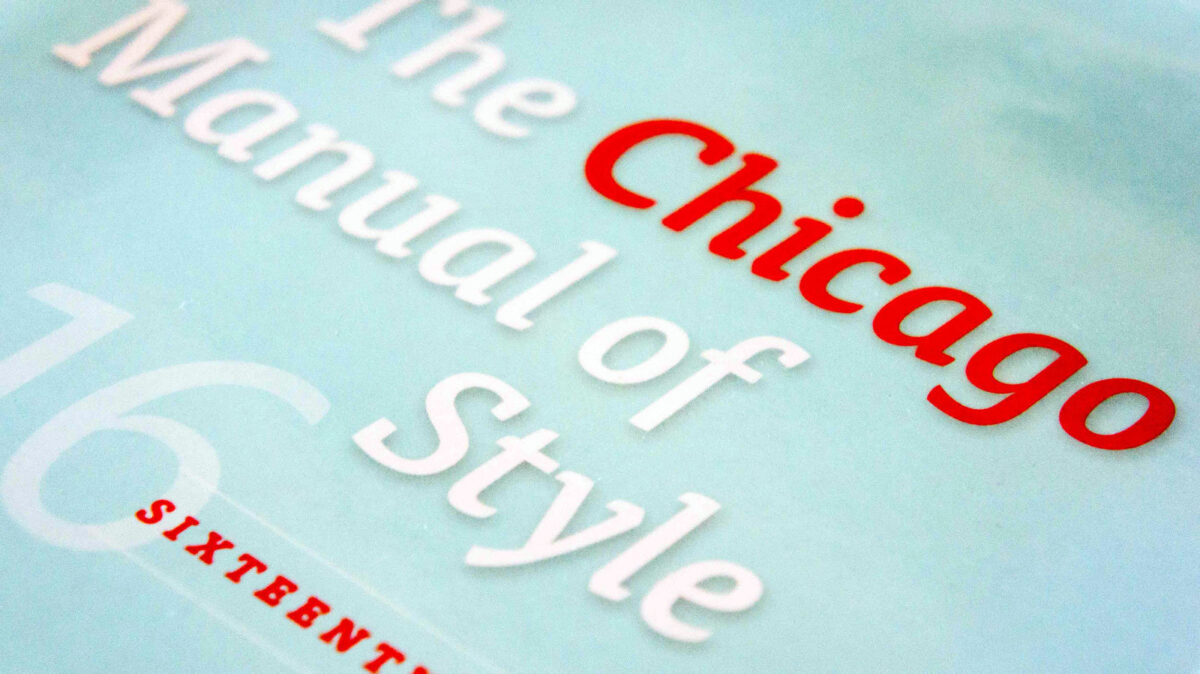When it comes to citation styles, academia can become a battlefield. Liberal arts professors advocate the MLA style as superior, while those who work in social sciences might proclaim the more chronologically focused APA formatting to be the most effective method for citation. More rarely, some scholars will stand up for Chicago Manual style, believing footnotes to be the truest, most honest form of referencing established evidence.
As the title may suggest, I am one of the aforementioned champions of the Chicago Manual style. To me, parenthetical citations are a thing of the past, designed to justify claims before they are questioned. Its all about the footnotes, and Chicago Manual gets that.
Say you are reading your favorite academic journal (mine is Postmodern Culture, but I have been known to occasionally dabble in Tolkien Studies). You come across some information that seems just this side of fishy. Fortunately for you there is a parenthetical citation. Hooray! Now you have to flip to the works cited page, locate the author’s name, find the source it is located in, open to the page, and voila! They knew their stuff. Parenthetical citations work.
Now, lets repeat this scenario with Chicago Manual style. Maybe you disagree with Dr. Abby Bender of New York University that the differentiation between “applause” and “loud applause” in his Ulysses signifies a level of attentiveness to the text (though you would be wrong; Dr. Bender is definitely correct). You use Project Muse to locate the James Joyce Quarterly and you find the quote I am referencing and…egads! There isn’t a parenthetical citation at all, but rather a dastardly footnote!
So, you follow the footnote to the authors name, at the bottom of the page and then…do everything you would do for MLA anyways. Hmm. So clearly the process for verification is not altered by using footnotes. It may even be streamlined, as turning to the works cited page isn’t even necessary. You can leave your work open to the page you are trying to know more about. So what is changed?
Readability is often not maintained as a key function of academic writing, much to the dismay of the every-man, but The Chicago Manual style of citation uses footnotes instead of parentheses because it makes it easier to read without altering the veracity of a piece of text. It is a small, but significant step to making the emphasis of educational writing informative, rather than didactic.
This may seem like much ado about nothing, but it starts to matter once you consider the reader in one’s writing. Parentheses at the end of a sentence break up the information being given, forcing one to read the name of an author and a page number before continuing to understand the knowledge in the text itself. With footnotes, you can skip right on by without impeding your reading while still taking note of the fact that yes, in fact, the author did reference somebody else for that information. Should that interest you, you may feel free to glance at the bottom of the page whenever it suits you.
All said, I think it is absolutely tragic that The Chicago Manual of Style is so often overlooked in favor of more archaic and traditional citation methods. As a university student in Chicago, it is out of both reason and pride that I advocate its use so heavily. Also, students may be interested to know that a complete footnote at the end of each page can do wonders in reaching a page limit in a way that parenthetical citations just can’t match.
Practically, it is easier; stylistically, it is less disruptive. The only obstacle to the style’s dominance over academic convention is lack of familiarity. So do yourself a favor, and learn a little more about The Chicago Manual of Style! Check out their website here, and your academic career will forever be changed for the better.
Discover more from UCWbLing
Subscribe to get the latest posts sent to your email.

